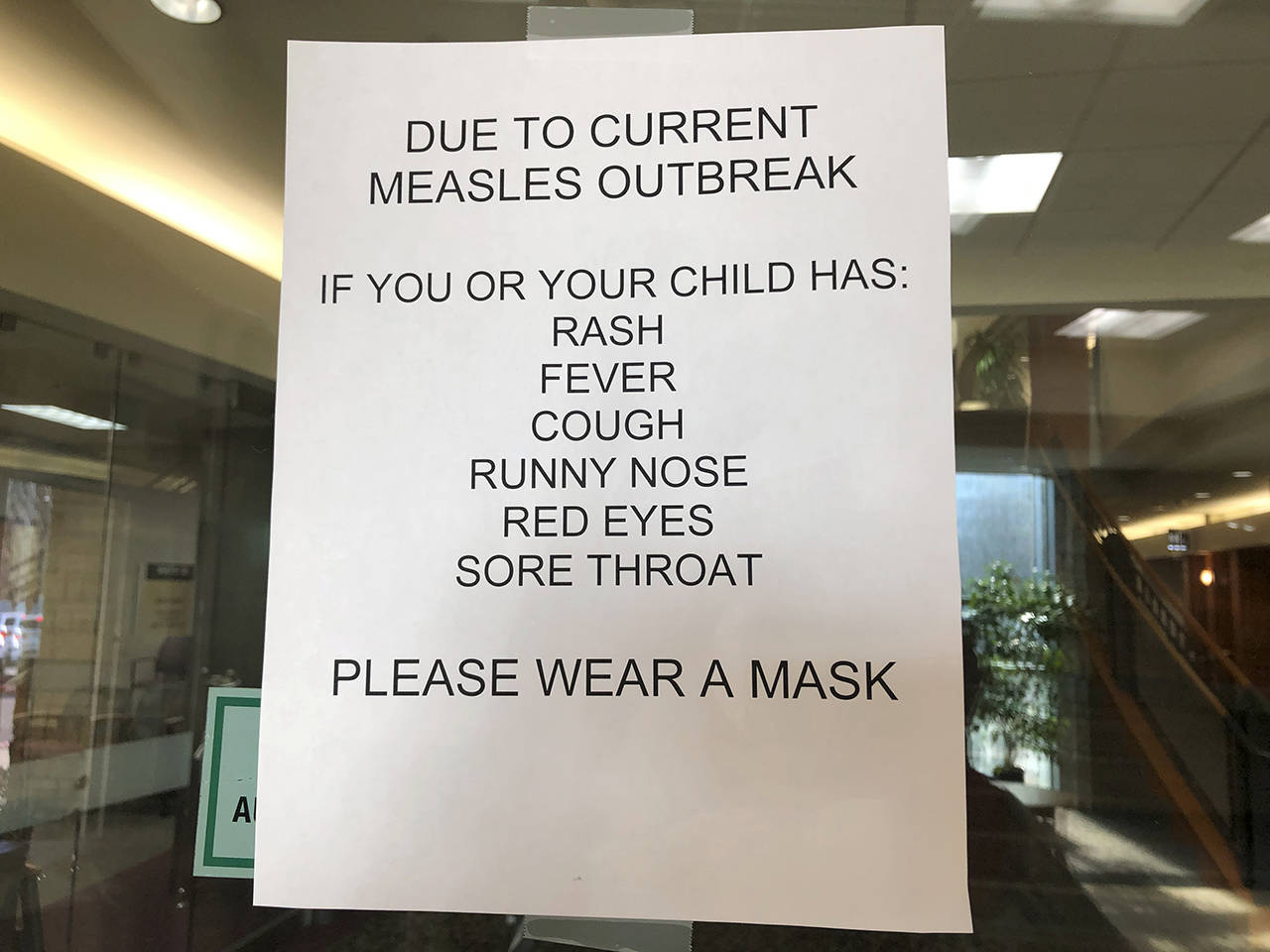By The Herald Editorial Board
The measles outbreak in Clark County earlier this year — with 73 cases of the highly communicable disease now confirmed — could easily have happened in Snohomish County.
It nearly did. Four years ago a visitor from California potentially exposed scores of people in the county. The woman, who had not been vaccinated, had visited Disneyland during the theme park’s own outbreak, and during a brief visit of less than 14 hours potentially exposed at least 173 people in Everett and Edmonds to the airborne disease.
The response by the Snohomish Health District — finding and interviewing those potentially exposed, testing 45 people, innoculating some and then advising 11 to restrict themselves from public spaces for a week — was an added responsibility on a local health agency that already is strapped for funding and expected — mandated — to provide a range of public health services.
Among services Snohomish and other health agencies are expected to provide are: tracking and responding to disease in the community, including sexually transmitted disease, opioid addiction, tuberculosis and hepatitis; recording birth and death certificates; recording and keeping health statistics; inspecting restaurants and issuing food-worker cards; testing drinking water and wells; inspecting septic systems; and providing health and nutrition services to children and youth.
In particular, Snohomish Health District has been a key player working with other local agencies and officials in the response to the opioid crisis.
And while health districts can budget for much of that work, funding has been inadequate and is further stretched in response to unexpected crises, such as disease outbreaks and natural disasters.
For Clark County, this year’s measles outbreak has already cost the county about $823,000; of which only $80,000 will be reimbursed through a state emergency response grant. And the county and its health district may only be halfway through their response to the outbreak.
In Snohomish County, the health district is responding to an increase in sexually transmitted diseases, such as syphilis, Health Officer Dr. Mark Beatty said during a meeting with The Herald Editorial Board last week.
Yet, while individual communities differ in their needs, Clark and Snohomish counties and the 33 other regional health agencies throughout the state suffer the same malady: inadequate funding, much of it resulting from budget cuts during the Great Recession and slow response by state lawmakers to address the issue.
Since the recession, the Snohomish Health District’s staff has been reduced from 230 full-time-equivalent employees to 126, who are expected to provide the same level of service to an ever-growing population of more than 800,000 in the county. Since 2006, the district’s annual funding has dropped about 40 percent, while the population has increased 14 percent.
Health districts, typically funded by their counties and through fees for various services, do receive state and federal grant funding. But unlike other public service agencies — such as fire, hospital, flood control, library and cemetery districts — health districts have no authority to levy their own tax revenue.
The funding picture may be starting to improve, however, following passage of legislation drafted by state Rep. June Robinson, D-Everett, and signed by the governor late last month. The legislation, establishing a foundational public health services structure, requires the 35 health district agencies, the state’s tribes and their health agencies, as well as the state Department of Health and state Board of Health, to agree on distribution of state funding for those agencies.
The legislation follows a report to the Legislature that asked for a prioritized list of services provided by those agencies and an assessment of expected costs.
With that framework in place, state lawmakers can now begin budgeting sustainable funding to health agencies, an improvement of the piecemeal allocations of the past, including $12 million in one-time funding that was provided for the entire state during the last budget session two years ago. Health districts and tribal health agencies, having agreed to the allocations, will have flexibility to use those funds for the services their communities need most.
This year, the governor’s and House’s budgets have allocated $22 million for statewide funding. The Senate budget’s allocation is harder to tally. But in all cases, the funding still falls short of the estimated $296 million of funding seen as necessary in each two-year budget for statewide public health needs that the report to the Legislature provided.
Stephanie Wright, Snohomish County Council member and a member on the county’s health board, told the editorial board that the county — and the state’s — public health responsibilities are part of the public infrastructure that government should be expected to support, as important as roads, public safety, law enforcement, courts and more.
So much of what Snohomish and other health districts provide is about prevention, taking steps that will limit the opportunities for outbreaks of disease and promote healthy communities, allowing people to go to school, to work and live their lives.
Beatty, making that point, noted that the vaccinations that would have significantly limited the measles outbreak in Clark County would have cost only pennies per dose.
Weighed against the more-than-$1 million response that Clark County and its taxpayers will have to absorb, that’s an investment we and state lawmakers should make without hesitation.
Talk to us
> Give us your news tips.
> Send us a letter to the editor.
> More Herald contact information.

























